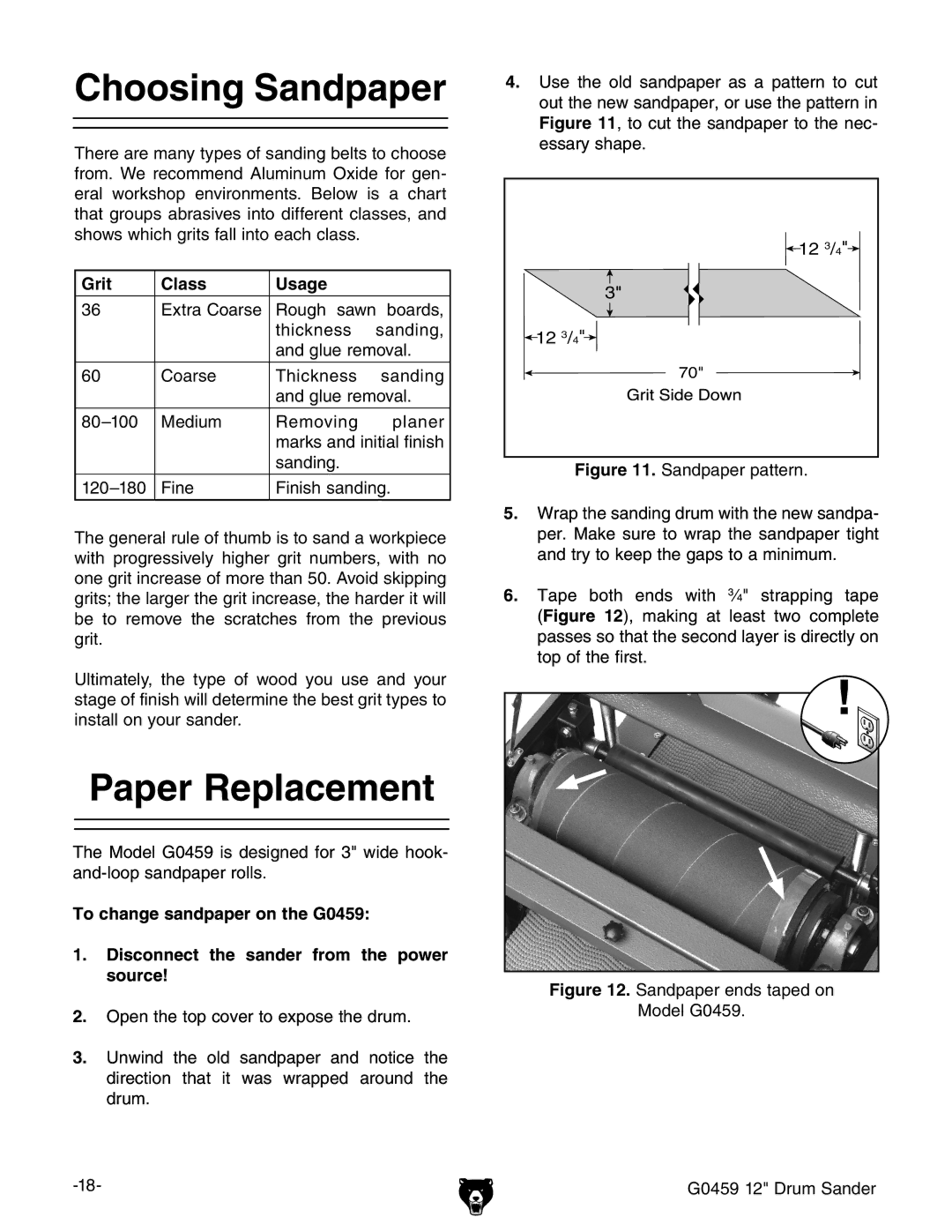
Choosing Sandpaper
There are many types of sanding belts to choose from. We recommend Aluminum Oxide for gen- eral workshop environments. Below is a chart that groups abrasives into different classes, and shows which grits fall into each class.
Grit | Class | Usage |
|
36 | Extra Coarse | Rough sawn boards, | |
|
| thickness | sanding, |
|
| and glue removal. | |
|
|
|
|
60 | Coarse | Thickness | sanding |
|
| and glue removal. | |
Medium | Removing | planer | |
|
| marks and initial finish | |
|
| sanding. |
|
|
|
| |
Fine | Finish sanding. | ||
|
|
|
|
The general rule of thumb is to sand a workpiece with progressively higher grit numbers, with no one grit increase of more than 50. Avoid skipping grits; the larger the grit increase, the harder it will be to remove the scratches from the previous grit.
Ultimately, the type of wood you use and your stage of finish will determine the best grit types to install on your sander.
Paper Replacement
The Model G0459 is designed for 3" wide hook-
To change sandpaper on the G0459:
1.Disconnect the sander from the power source!
2.Open the top cover to expose the drum.
3.Unwind the old sandpaper and notice the direction that it was wrapped around the drum.
4.Use the old sandpaper as a pattern to cut out the new sandpaper, or use the pattern in Figure 11, to cut the sandpaper to the nec- essary shape.
![]() �������
�������![]()
��
![]() �������
�������![]()
![]()
���
Figure 11. Sandpaper pattern.
5.Wrap the sanding drum with the new sandpa- per. Make sure to wrap the sandpaper tight and try to keep the gaps to a minimum.
6.Tape both ends with 3⁄4" strapping tape (Figure 12), making at least two complete passes so that the second layer is directly on top of the first.
Figure 12. Sandpaper ends taped on
Model G0459.
G0459 12" Drum Sander |
